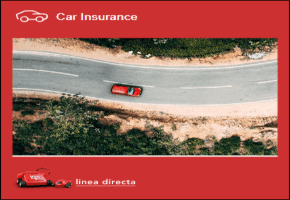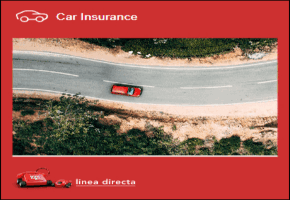- Region
- Vega baja
- Marina Alta
- Marina Baixa
- Alicante
- Baix Vinalopo
- Alto & Mitja Vinalopo
-
ALL TOWNS
- ALICANTE TOWNS
- Albatera
- Alfaz Del Pi
- Alicante City
- Alcoy
- Almoradi
- Benitatxell
- Bigastro
- Benferri
- Benidorm
- Calosa de Segura
- Calpe
- Catral
- Costa Blanca
- Cox
- Daya Vieja
- Denia
- Elche
- Elda
- Granja de Rocamora
- Guardamar del Segura
- Jacarilla
- Los Montesinos
- Orihuela
- Pedreguer
- Pilar de Horadada
- Playa Flamenca
- Quesada
- Rafal
- Redovan
- Rojales
- San Isidro
- Torrevieja
- Comunidad Valenciana


- EDITIONS:
 Spanish News Today
Spanish News Today
 Murcia Today
Murcia Today
 Andalucia Today
Andalucia Today
article_detail
Spain announces big changes to motorway driving from 2025
The new regulations will apply to motorways and dual carriageways throughout Spain

So far, 2024 has been a fairly quiet year when it comes to the ever-changing traffic laws in Spain but with just a few weeks left, the Directorate General of Traffic (DGT) has announced that some big amendments are coming our way in 2025.
Essentially, the rule changes, which will apply across Spain, will focus on the use of hard shoulders and central lanes with the aim of improving road safety during bad weather, traffic jams or when the emergency services are called out.
What changes does the DGT want to implement next year?
The first change will be applied to article 31 of the General Traffic Regulations (RGC), which concerns driving on motorways during adverse weather conditions, such as snow or ice.
From January 2025, when the weather is especially bad, motorists will only be allowed to drive in the right lane and overtaking will be prohibited.
This is intended to free up the left lane for snow ploughs to use or for emergency vehicles and tow trucks to get through.
The second rule alteration also relates to motorways and dual carriageways.
It specifies that, in the event of a traffic jam, a central corridor must be left between the two lanes of the high-capacity road for the passage of emergency vehicles. In practice, this means that when traffic is at a stand-still, drivers must move into the far-left or far-right lanes, leaving the middle one free.
Thirdly, in a move that will come as a welcome relief to motorcyclists, the DGT has announced that they will be allowed to use the right-hand shoulder of the road in the event of a traffic jam or hold-up.
However, there are two important conditions to be aware of: motorcyclists must travel at a maximum speed of 30 km/h, and they must give priority to vehicles that are required to use the hard shoulder, such as bicycles.
Who can use the hard shoulder?
The General Traffic Regulations have also been updated to clarify which vehicles are allowed to use the hard shoulder. These include:
- Animal-drawn vehicles
- Special vehicles with a maximum authorised mass not exceeding 3,500 kilos
- Bicycles
- Mopeds
- Vehicles for people with reduced mobility
These vehicles will be allowed to use the shoulder on their right in the event that there is no other road or part of a road specifically designated for them.
Find all the latest motoring and travel news here or join our Driving in Spain Facebook group for regular updates
Image: DGT
staff.inc.ali
Loading
Sign up for the Spanish News Today Editors Roundup Weekly Bulletin and get an email with all the week’s news straight to your inbox
Special offer: Subscribe now for 25% off (36.95 euros for 48 Bulletins)
OR
you can sign up to our FREE weekly roundup!
Read some of our recent bulletins:
25% Discount Special Offer subscription:
36.95€ for 48 Editor’s Weekly News Roundup bulletins!
Please CLICK THE BUTTON to subscribe.
(List price 3 months 12 Bulletins)
Read more stories from around Spain:
Contact Murcia Today: Editorial 000 000 000 /
Office 000 000 000

















